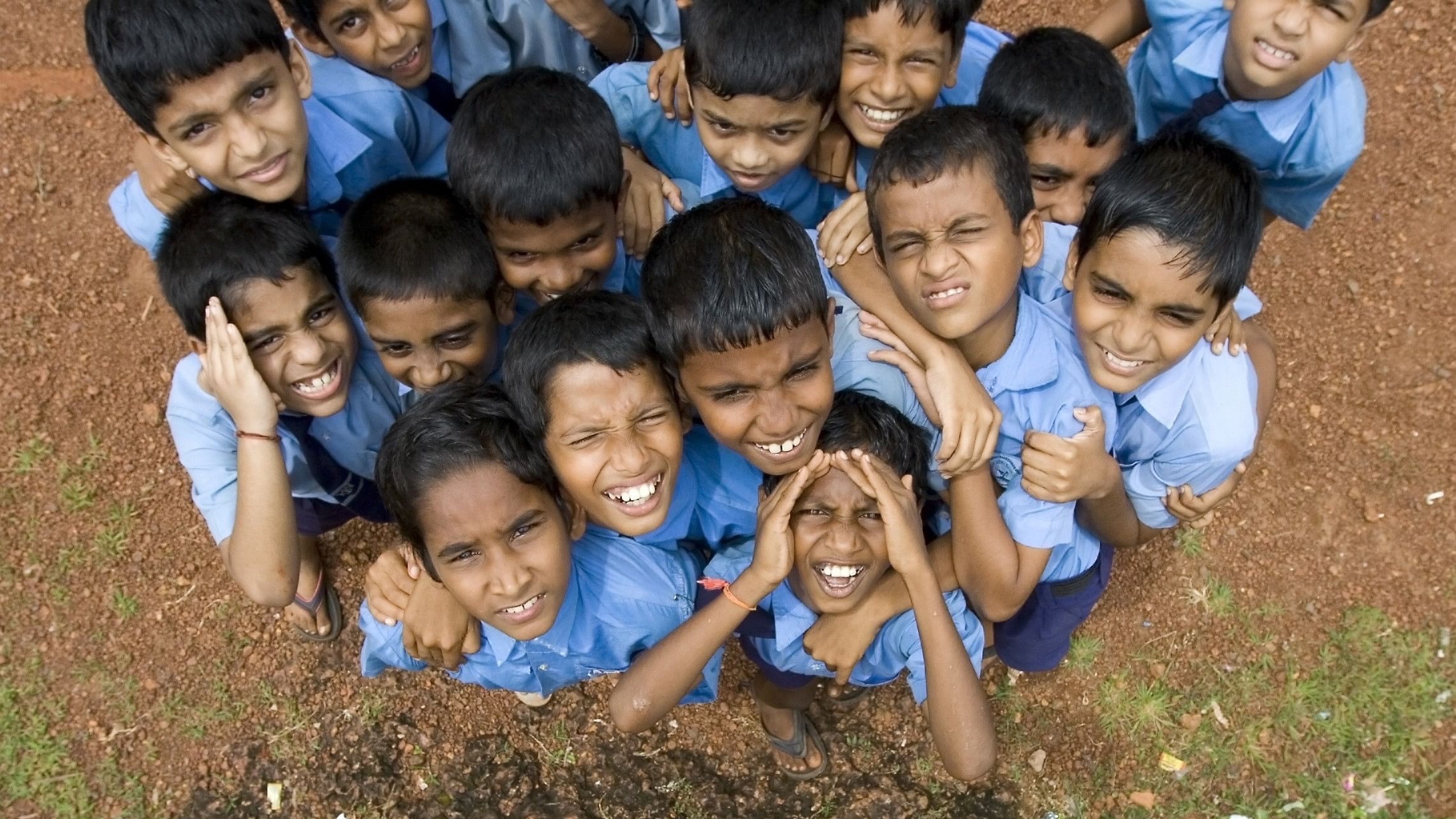
Indian schoolboys of an elementary school in the rural area of Canacona-Goa.
Credit: iStock Photo
Caste-based census has been in the news recently. Caste-based violence often gets some space in the news. Caste-based discrimination, however, is too ingrained in our lives to become news.
We also refrain from discussing caste at home and schools. Let us focus on schools here, English medium schools, to be precise. Caste is a taboo in mainstream schools as well as the liberal ones. Some of these schools may encourage conversations on gender and sexuality, but caste is a different ball game altogether.
A report by Oxfam states, “Education is indeed a tool of social transformation. However, the stranglehold of caste discrimination makes this process slow and difficult”. It adds: “Indian schools are often sites of extreme forms of discrimination”.
Many of us who have studied in these schools pretend as if caste-based discrimination was a malaise of the past. Some claim that caste-based ‘problems’ occur only in far-flung and rural pockets of our eastern states.
We do not stop to think that even to pretend that these issues do not exist around us today, we have to be at the top of the caste ladder. We have taken caste far and wide, beyond our borders. A Reuters report from earlier this year states, “Toronto’s school board has become the first in Canada to recognize that caste discrimination exists in the city’s schools and has asked a provincial human rights body to help create a framework to address the issue”.
Caste, for many of us, is about reservations and, now, also about the census. About both of these, the majority of us, at best, understand little.
Back to the schools. Shying away from caste has not helped. We have a generation which is reinforcing the caste stereotypes, turning its eyes away when the mirror is shown or is simply unaware — a generation staying on an island in its own country – knowing little about its country and its brethren! Surveys have often shown that one in every four Indians practises untouchability. So, how about talking about caste with children at these schools?
Can we enable the children to be better aware of the society we all inhabit? Those from elite socio-economic backgrounds can get to know the world beyond the islands they inhabit. Of the existence of other castes – of children who lead lives that are similar and yet very different at the same time. The idea is not to get these children to be either patronizing or condescending but for them to be aware of the biases around them. To get them to think about and question these biases.
When they take a flight, for example, the person flying the plane will be, in all probability, from a particular caste or caste, while the person they will notice cleaning the airport toilet will, in all probability, hail from a specific caste. These castes will seldom overlap and be rarely discussed, let alone questioned.
Can we have books for adults and children that project caste sensitively at the school library? Back in 2008, Emily Wax wrote in the Washington Post on Turning the Pot, “It has been called essential reading for every Indian child, a lively illustrated storybook aimed at raising youthful awareness of the injustices of the country’s caste system, much as “Uncle Tom’s Cabin” exposed the indignities of slavery to white America”.
Conversations on caste, religion, gender and sexuality often overlap and dovetail into one another. Can we create an ambience where conservations on these not-easy-to-talk topics are normalised? Can we screen movies and encourage discussions on them? Can we have knowledgeable people come and talk with adults and children?
And can we also discuss caste in textbooks? Caste has found space in textbooks, but we need to rectify the errors, rise above the biases and circumvent the lure to reinforce the stereotypes. Caste biases in school textbooks: a case study from Odisha, India by Subhadarshee Nayak and Aardra Surendran states, “..systematic analysis of caste bias within curricular material in India, brings to fore the exclusion of Scheduled Castes. The persistence of caste bias across textbooks is in direct violation of the recommendations of the National Curriculum Framework-2005 and systematically creates an illusion that Indian society is an equitable one”.
Today, this on-your-face, taking-the-bull-by-horns approach seems to be the only way out. There are risks and complexities here, too, like in every case. But here, we have little to lose.
(The author is a freelance writer)